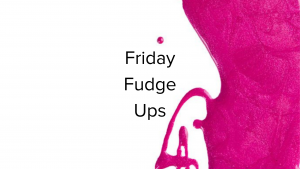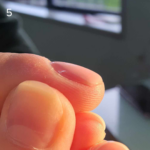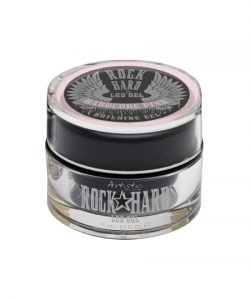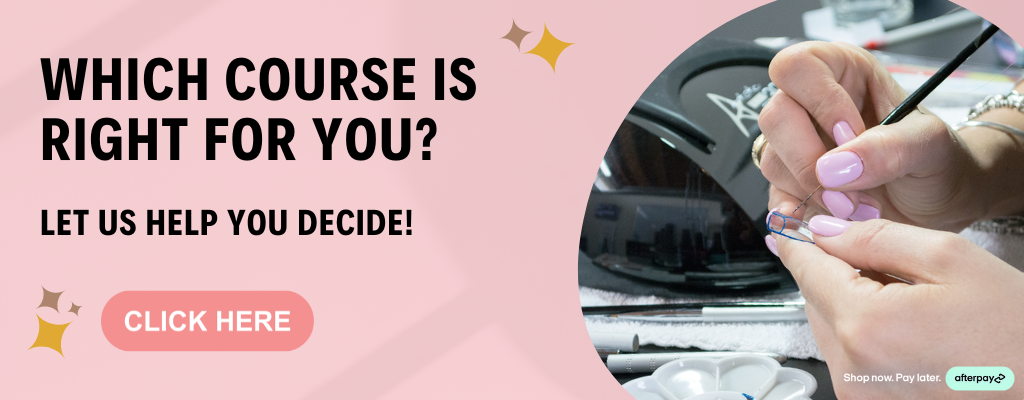 This week, we’re diving into some more Chemistry Basics – this is Part 2 of a series that will give you insight into some of the key concepts that make or break nail treatments – and hopefully some insight into why proper training is essential in our industry.
This week, we’re diving into some more Chemistry Basics – this is Part 2 of a series that will give you insight into some of the key concepts that make or break nail treatments – and hopefully some insight into why proper training is essential in our industry.
Ever wondered why a new set of nails sometimes feels a bit tight for the first few days? Welcome to the world of monomers and polymers, where science meets beauty!
The Mystery of Monomers
Imagine billions of tiny molecules, (remember, they’re called monomers), bouncing around in their container, doing their best to avoid each other. They’re like little introverts at a party, taking up as much space as they can. But when the conditions are just right (thanks to an initiator, and in the case of nails that’s NOT a few orange Pals), they suddenly decide to come together in a big group hug. This ‘magic’ (as clients like to call it) is what we call polymerisation, and we explored that in Part 1.
Shrinkage: The Good
As monomers unite, they get closer together, and we can actually see the result: shrinkage. You can imagine this back at the party – a group of people avoiding each other is collectively much bigger than a group of people now tightly hugging. You can also sometimes see it in nails – Gel Polish creeping away from the nail edge on a hot day for example.
Shrinkage is totally normal in nail enhancements, with polymers shrinking between 3-20%. If your nails feel tight at first, that’s just the shrinkage you’re feeling! We WANT some shrinkage, as that’s how our capping grips the free edge, and our polish grips the porous upper layer of nail plate.
Shrinkage: The Bad
Watch out – in the nail world, shrinkage over 12% is considered excessive.
Professional-only brands aim to keep the natural shrinkage of their products well below this level by lab testing the reactions of their products in various conditions, and supplying lamps and other products that ensure safe levels of shrinkage.
Not all brands are lab tested as they rush to the retail market as this process is expensive and time consuming.
Shrinkage: The Ugly
Excessive shrinkage can cause lifting, tip cracking, and other service issues.
Ever noticed a bubble-like lift in the center of your nail? That’s called ‘pocket lifting’ and it’s a sign of too much shrinkage too quickly.
Sometimes it isn’t noticeable until you next go back to change your colour as shrinkage can continue for hours after application, popping up after you’ve disguised it with a colour.
How to Control Shrinkage
Not all shrinkage is controllable by the brand – you have a part to play too, starting with always following the brands usage directions.
Here’s a quick guide to what can increase shrinkage and how to avoid it:
Things That Increase Shrinkage:
- Wet acrylic beads: Aim for the perfect liquid-to-powder ratio.
- Hot products: Keep them cool, especially in summer – try using a Beauty Fridge for the 5 min before a client arrives, or sitting your products on a cooling pad.
- Warm clients: Try using a cooling wrist rest or even dressing up an ice pack under your table towels.
- The wrong curing lamp: Always match the lamp to your products.
- Too much product: Work thin!
- Shiny nail plate: Make sure you have thoroughly prepped! Use good quality buffers and replace them when worn out.
- EDUCATION: Stick to your training and product guidelines.
Shrinkage is part of the super fun dance of chemistry that creates those long-lasting manicures. Embrace the science, follow these tips, and you’ll be well on your way to defining yourself as an educated, professional Nail Technician!
Tell me (with the Submit button at the bottom) – what is one thing that frequently happens to your nails that you wish you could solve?
This is what else we loved last week –
- More science!
- Filing the PERFECT Oval Nail.
- Being an efficient, well oiled Salon Machine.
- Watching people play with Nail Art with NO idea what they’re doing (but learning from it!)
- Techs that know their worth and don’t apologise for it.
Click here to send us YOUR thoughts, feedback or highlights, we would love to share
PS Which course is right for you? Click here to take the Monaco Quiz!
Click here to get a FREE Video Lesson from our course ‘The Art of Pigments‘ and be the first to get the latest news from Monaco!




